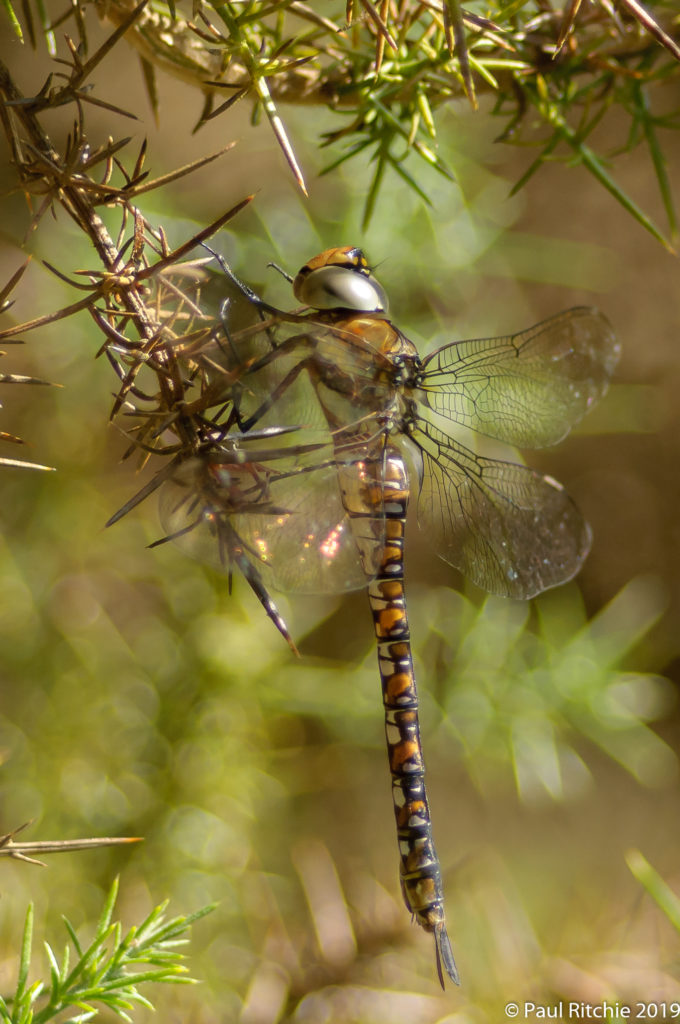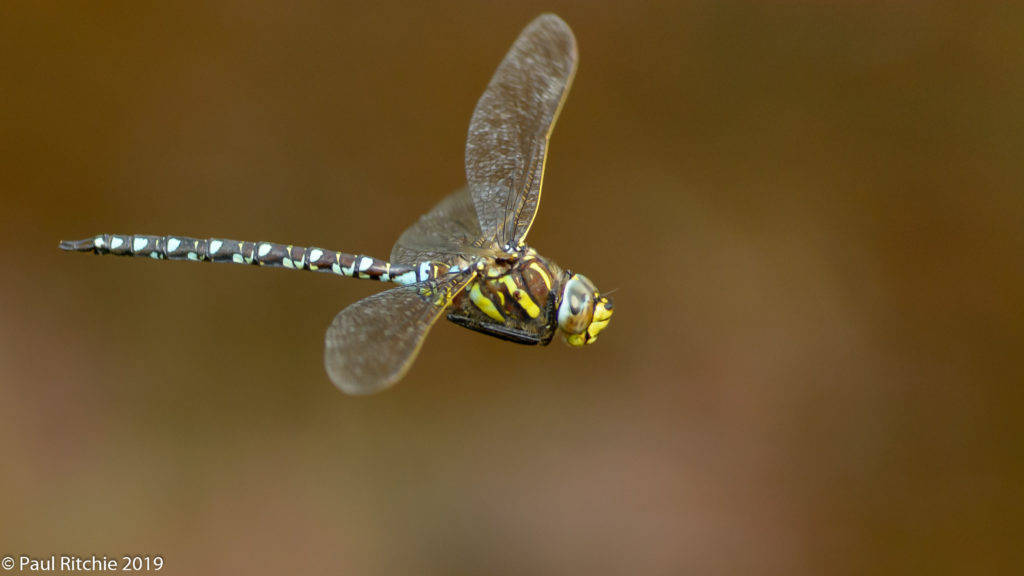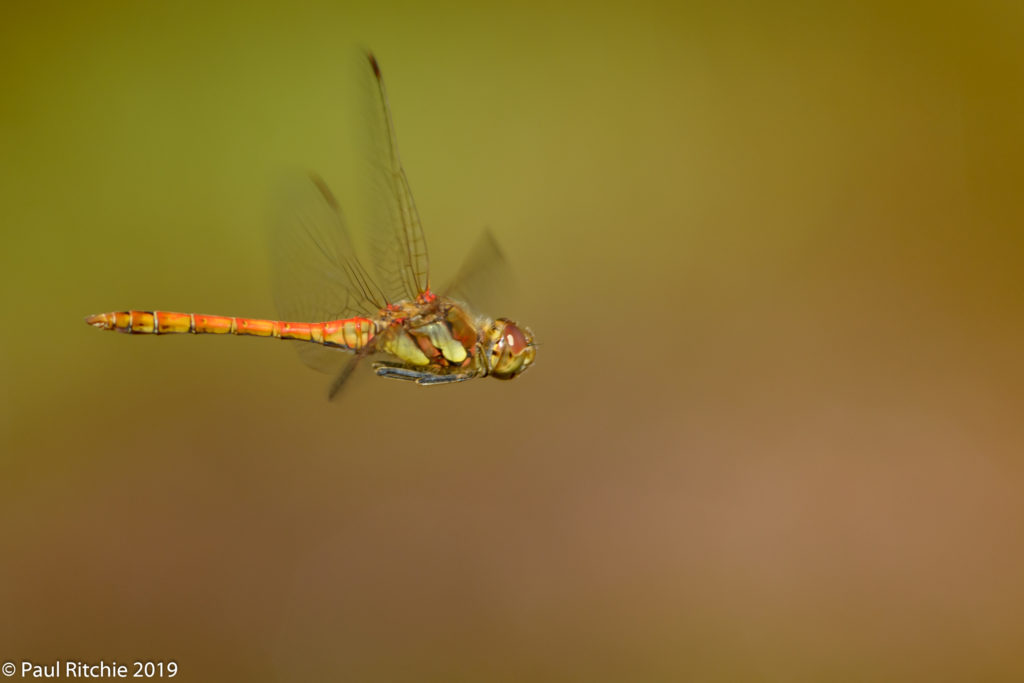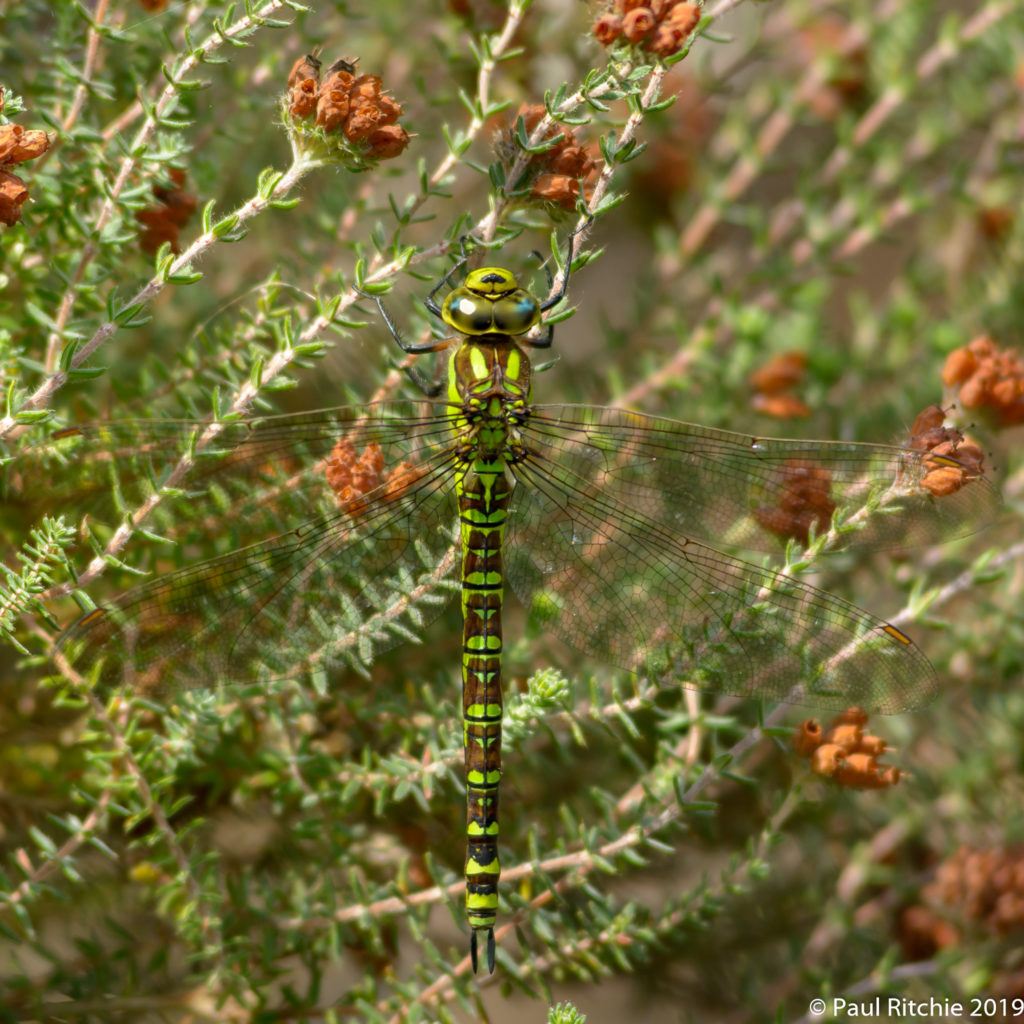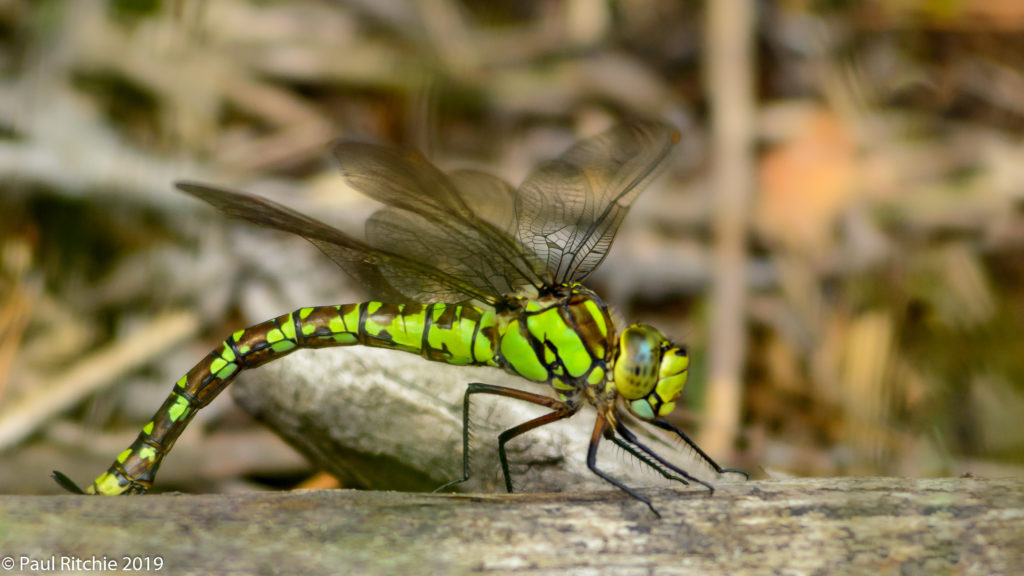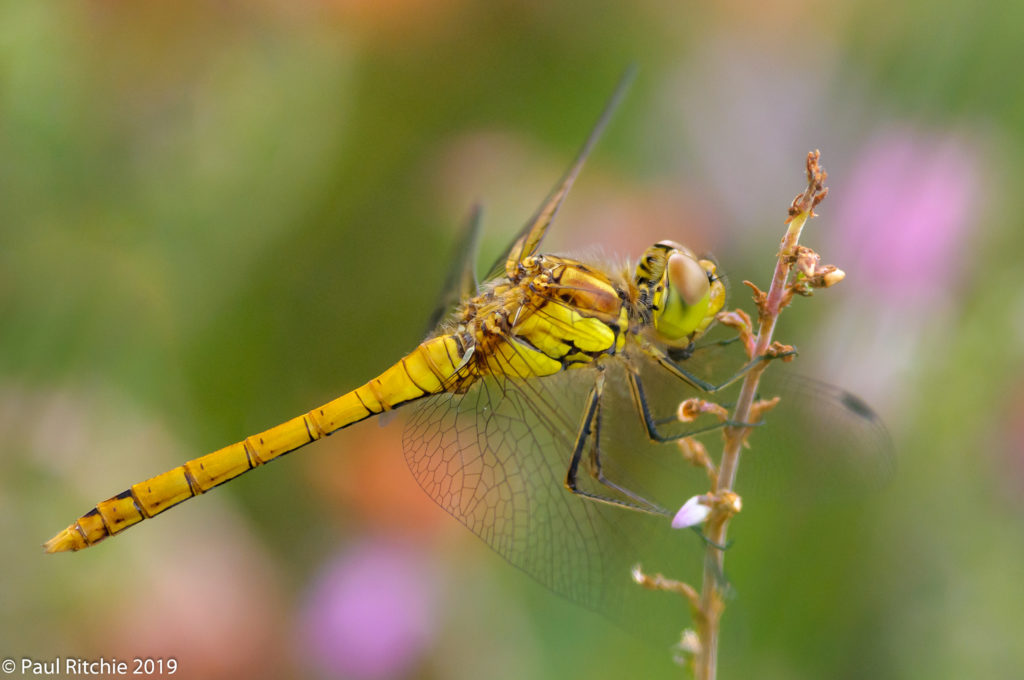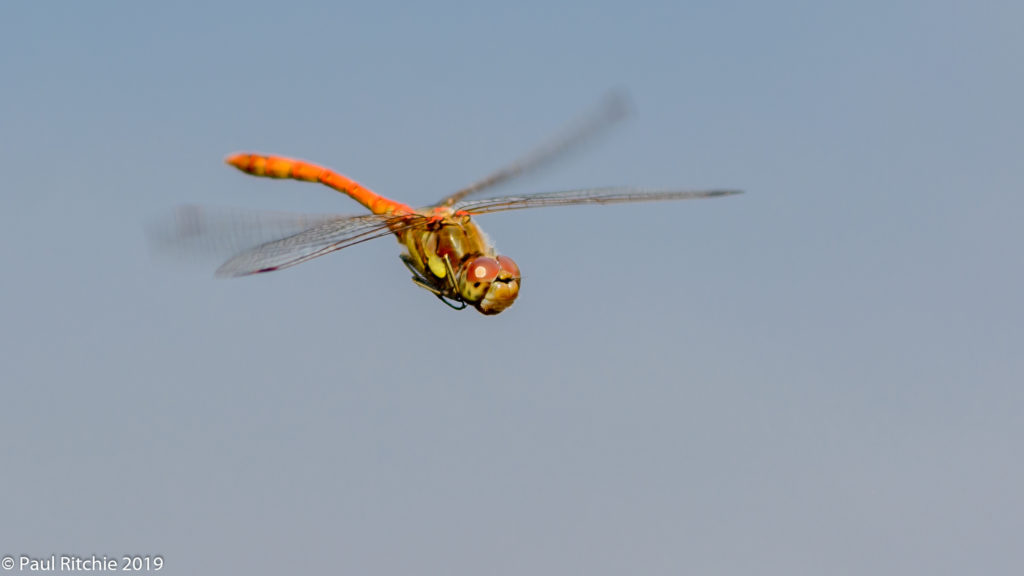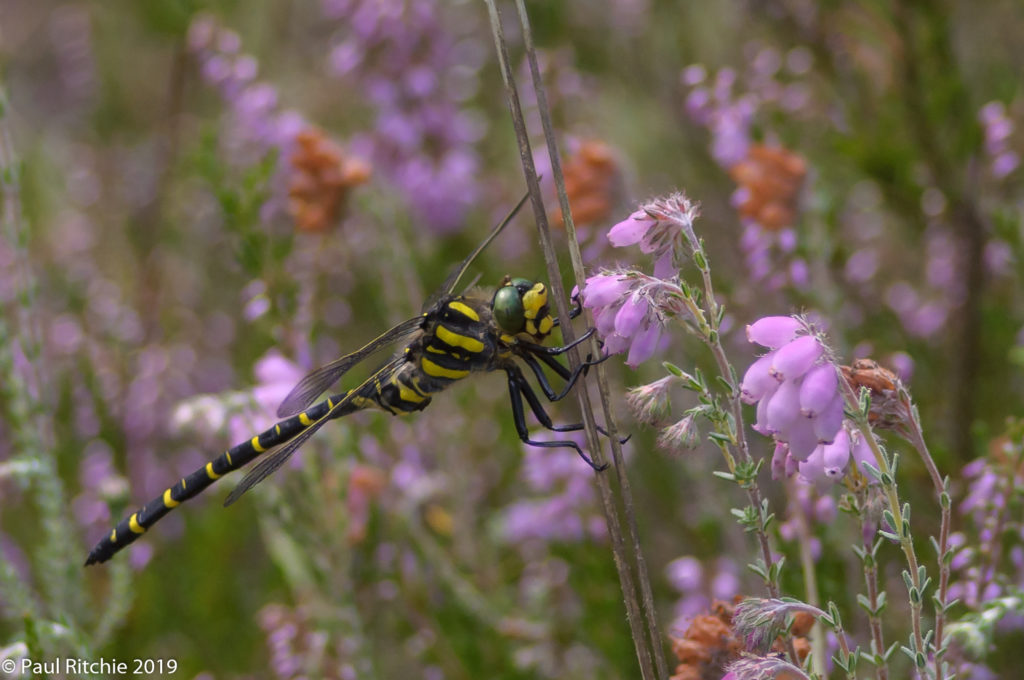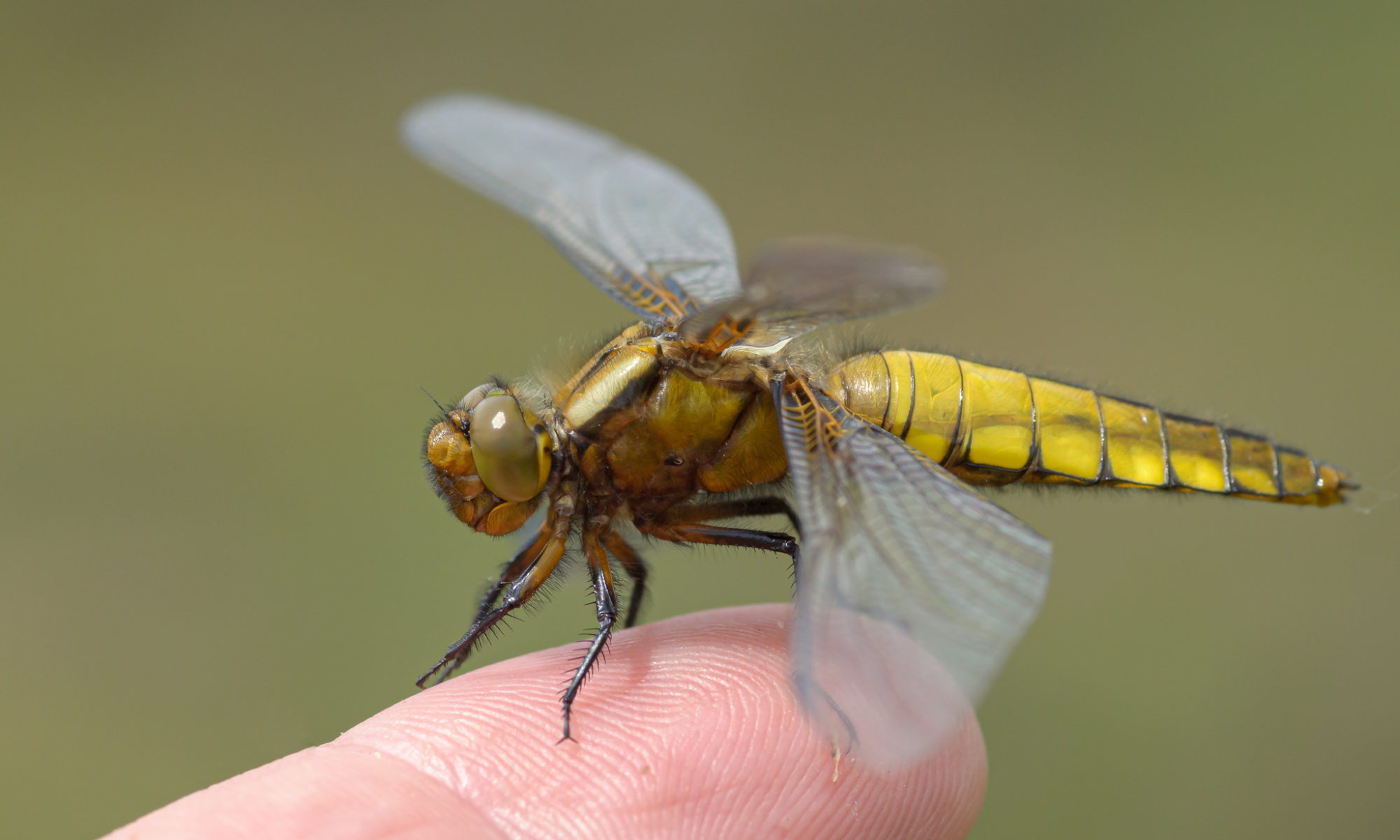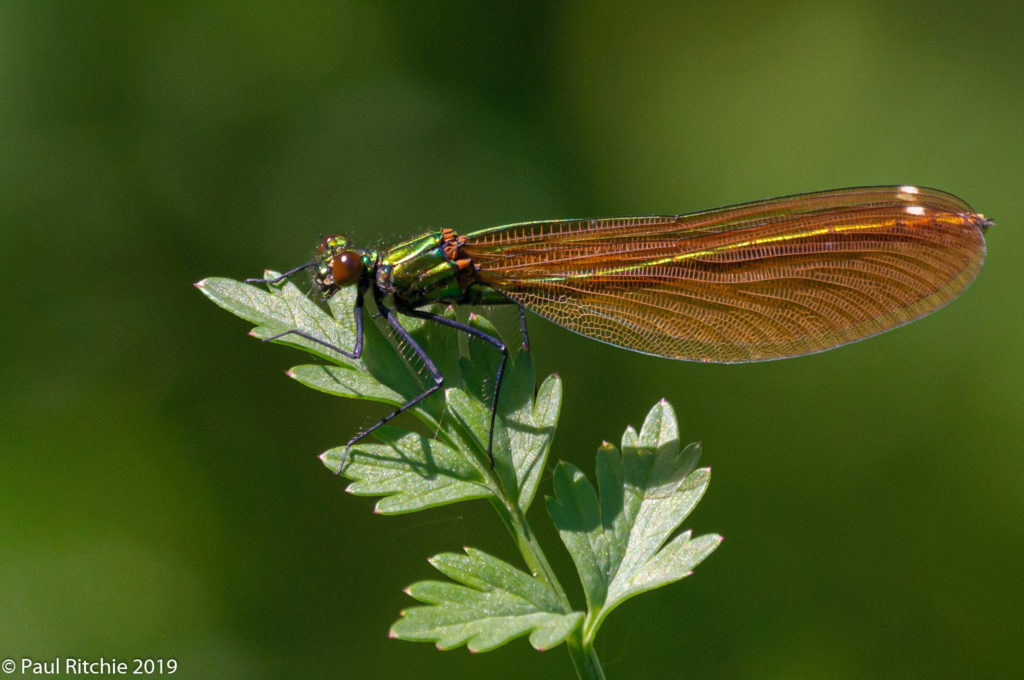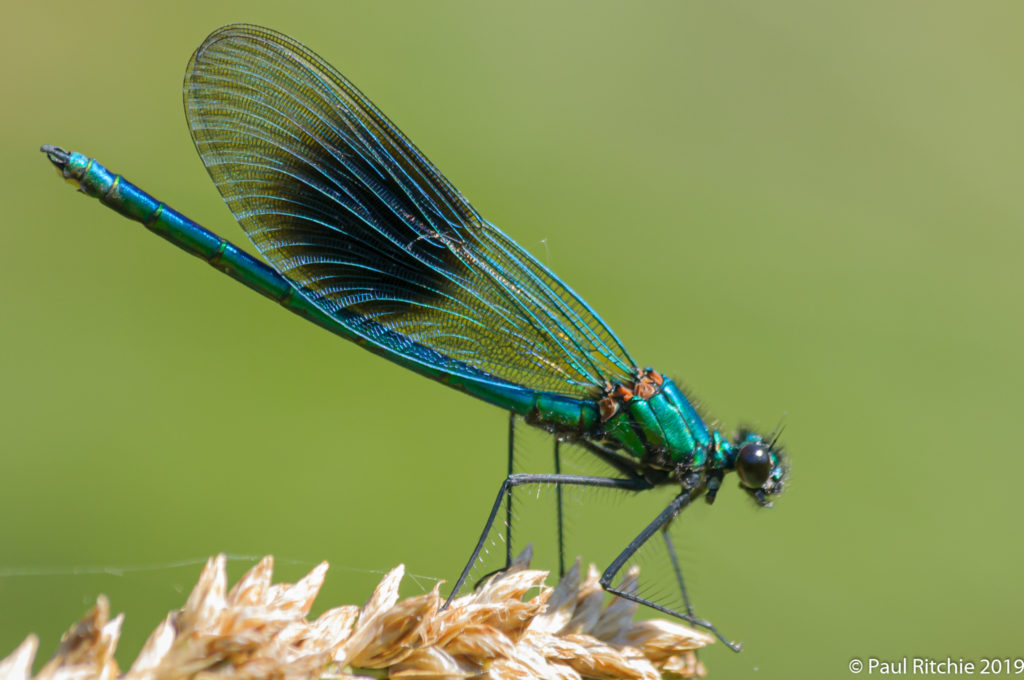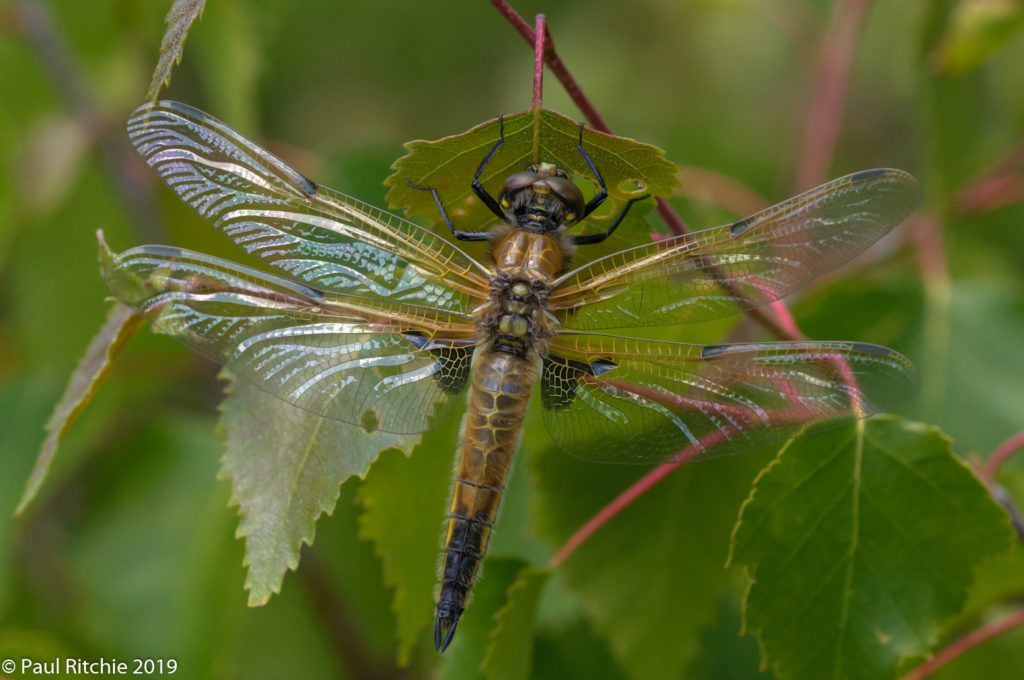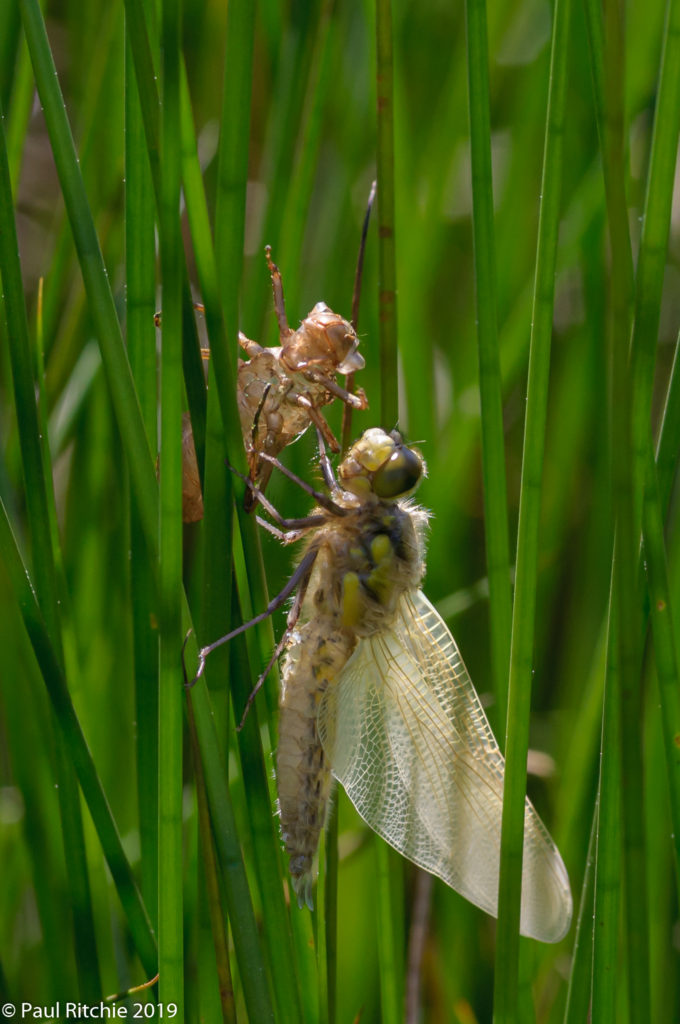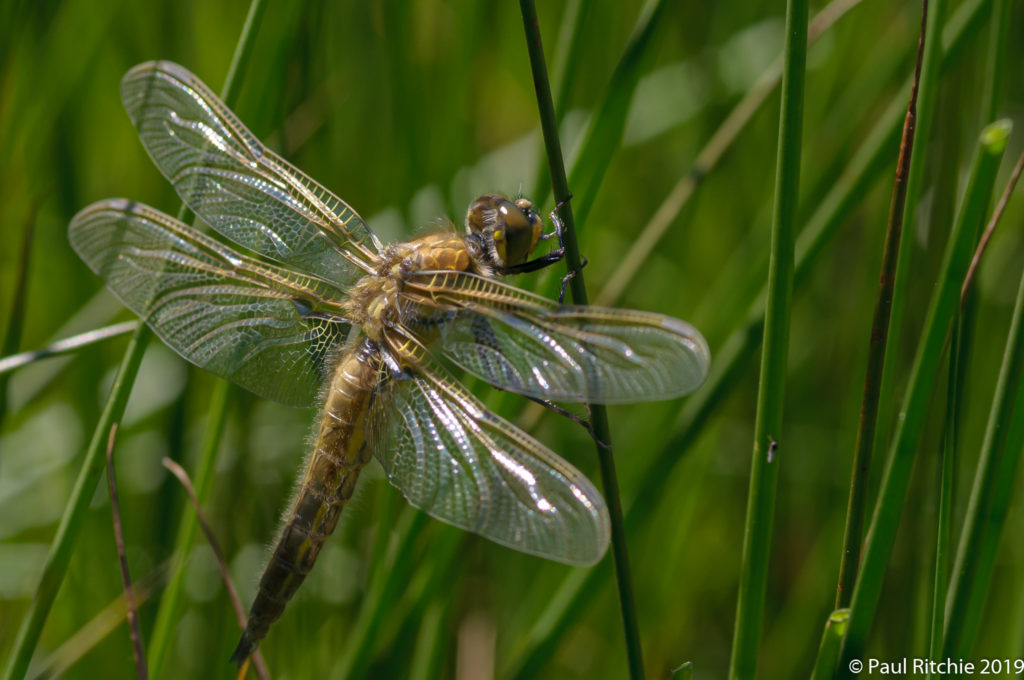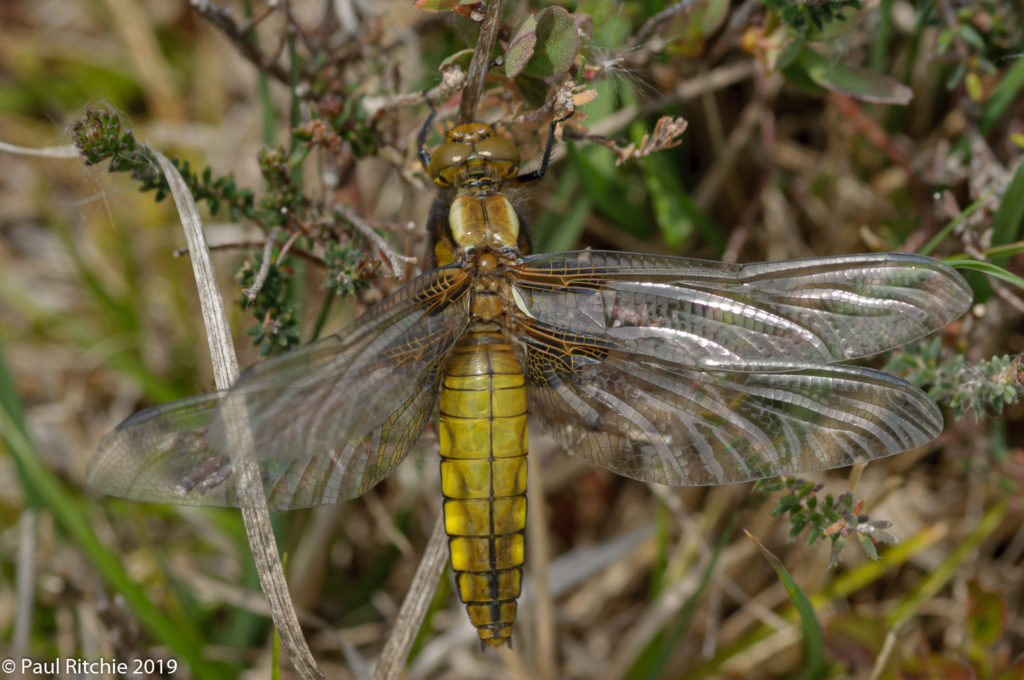Ten years chasing dragonflies and I’m still in love with them. Being a seasonal treat helps to forward the interest; every April I can’t wait to spot that first Large Red.
Then a wait for the other Spring species to emerge, then, all of a sudden, there’s a bounty to sink your teeth into. The spectacle of mass emergence where every step reveals the glitter of tenerals.
Species counts rising rapidly; the first sojourn to the Somerset Levels and local favourites providing endless opportunities. If the weather stays sweet it’s a non-stop feast throughout May, June and July while August allows some time to kick back, relax and enjoy the spectacle of a pond or stream.
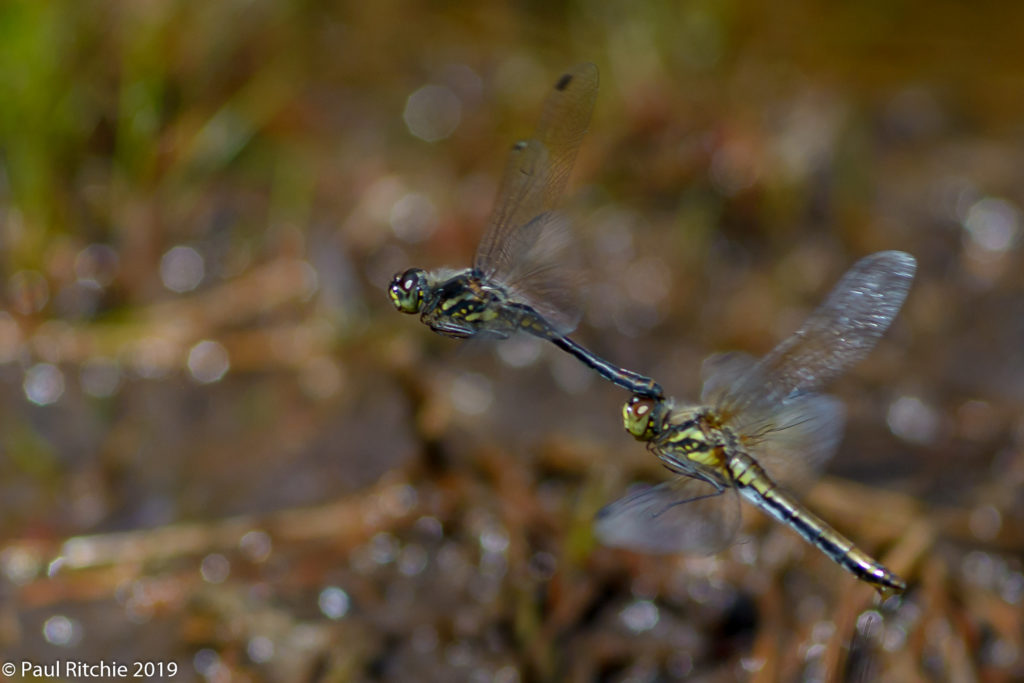
August can be a fantastic month if the water levels are high enough and the temperatures remain above 20 degrees. This year however most of the ponds were dry, regardless of the rains we’ve had.
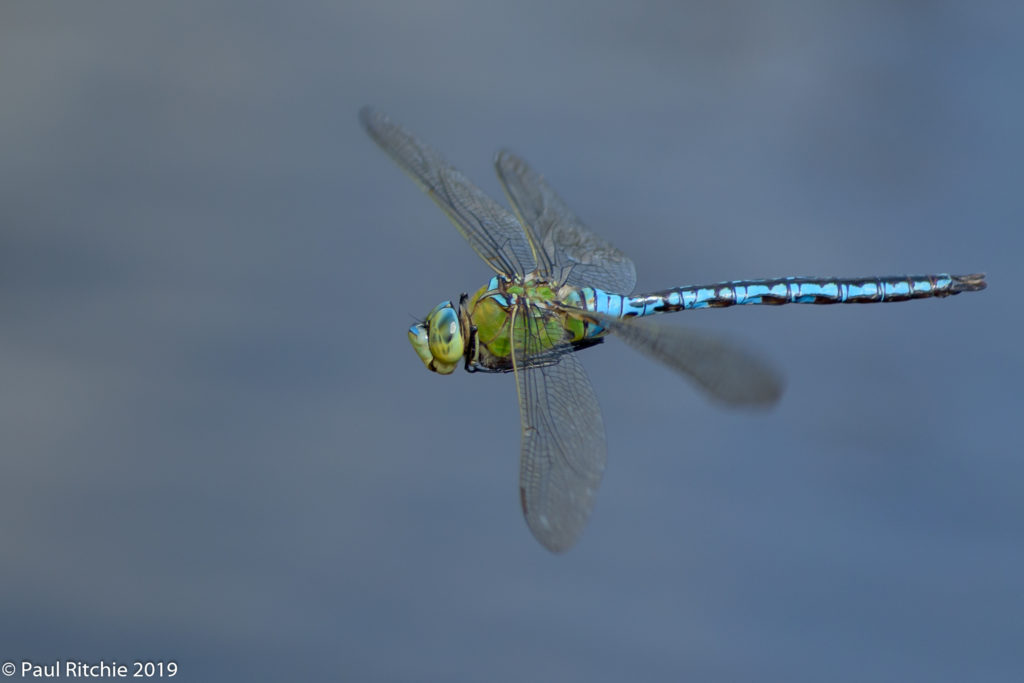
August is the month for Hawkers and there’s few things I enjoy more than spending a few hours at a pond engaging with a resident Southern, Moorland, Migrant or a Brown.
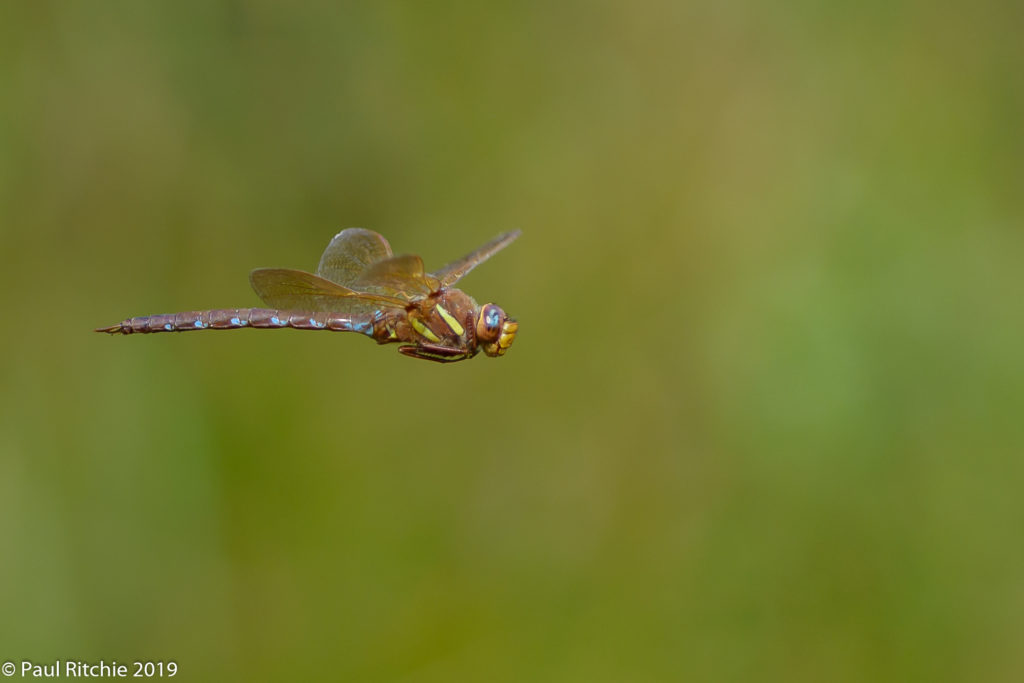
When all you’re left with is puddles the only dragonflies you’re likely to encounter are the hardier, less fussy species, and there comes a time when you have to prioritise.
Now I can happily wait at a pond for something interesting to fly in, and with the Moorland here in the New Forest you normally have to wait for one to appear.
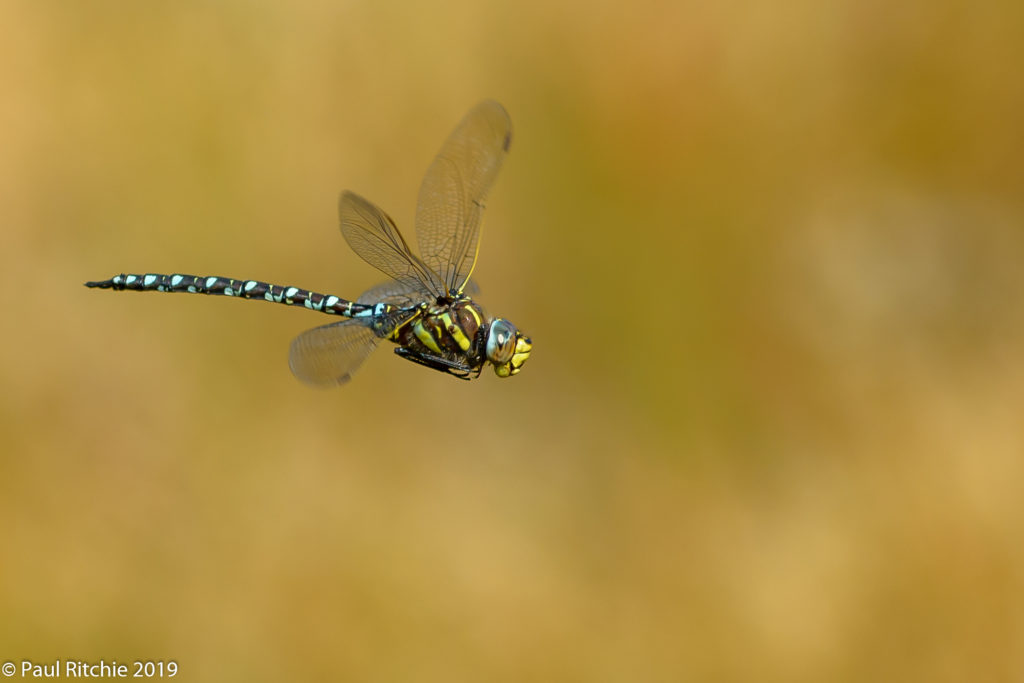
On the other hand you normally wouldn’t have to wait for a Southern; there’s usually one already on patrol when you arrive. None were waiting for me this year at Ramsdown, and I had to search hard to find one at Bramshill.

Surprisingly I’ve had females show first at both locations, and with just the one male (so far) at Bramshill found myself running out of options
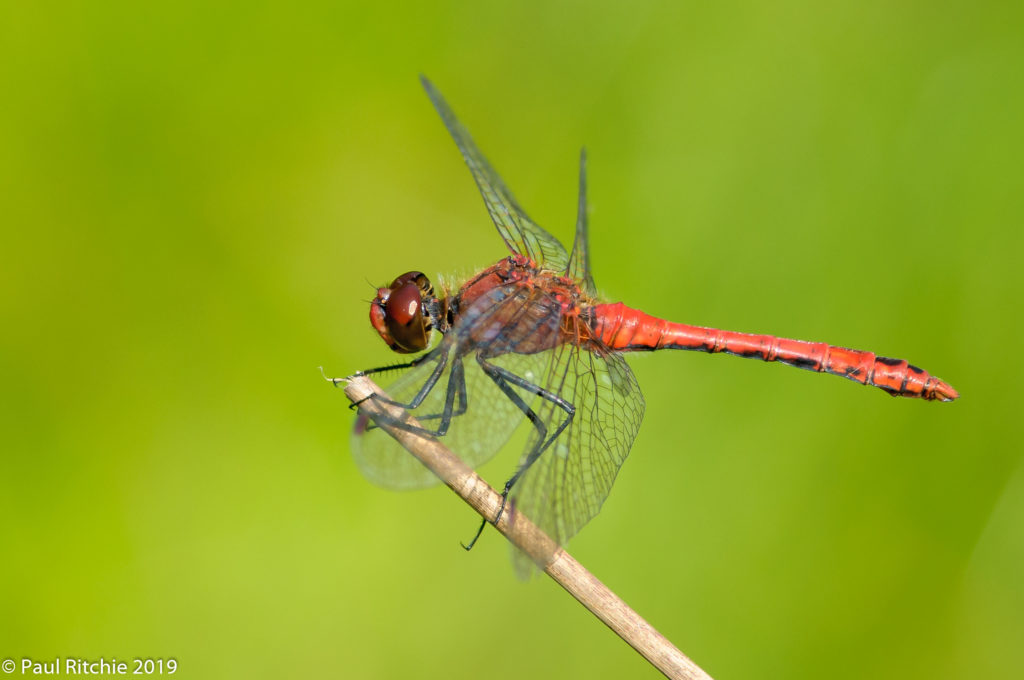
Cadnam Common usually comes up trumps, but alas resembles a silage pit right now and all we saw was a lone Migrant patrolling the reeds of the island, so we made the short drive to Bentley Wood.
Always a gamble and after a fair walk in you keep your fingers crossed there will be something over the water. Thankfully on our visit on 1st September not only was there a male present but a friendly, gregarious individual who it was a delight to engage with.
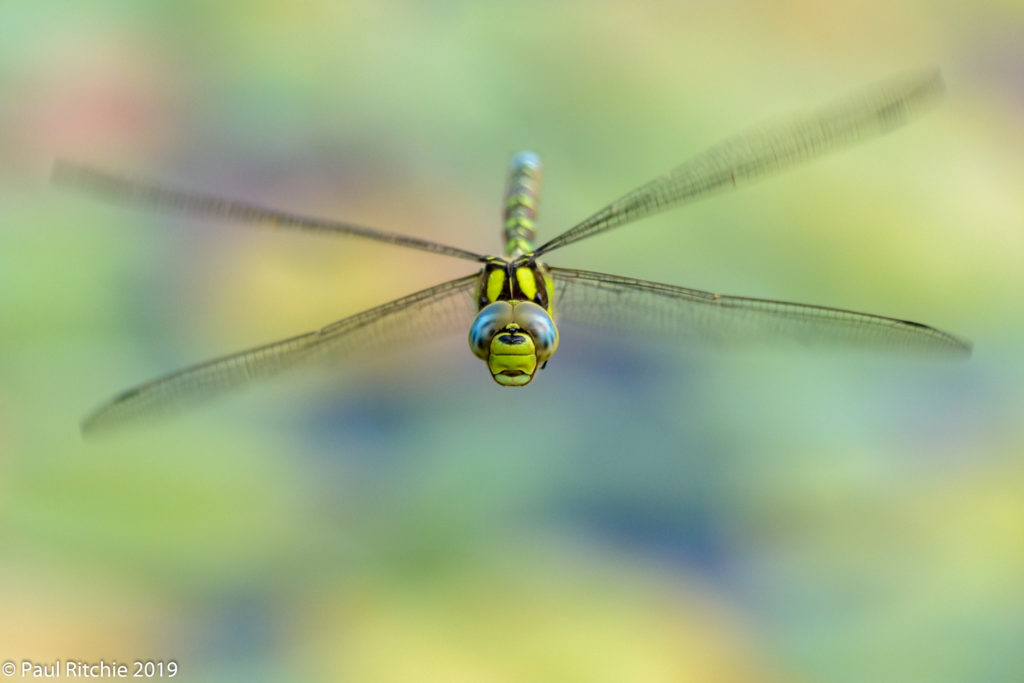
At last! I had to wait until September for for the opportunity, but looking back I normally have my best moments with Southern in September.
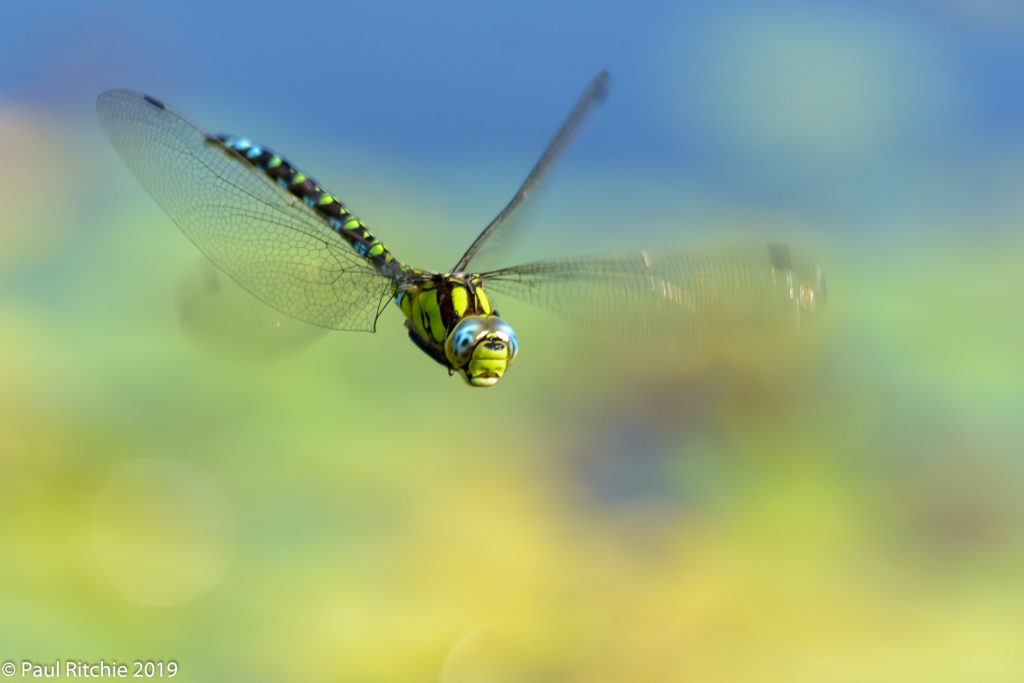
Since then it’s taken a downward turn. A couple of friends were down this week for a little late Odo action and were disappointed; as was I when I ventured out on Thursday.
Too cool, too windy and mostly too dull, and I wasn’t prepared to root around for roosters as my stealth has taken a beating since an ankle injury a fortnight ago.
I had planned to venture forth today, but with only a possible 17 degrees I couldn’t bear the disappointment of another fruitless search.
If the temperature improves and we get a late blast of warm sunshine I’ll see things through until the end of the month. A late blast of enjoyment before Autumn takes hold and I can look forward to next season.

